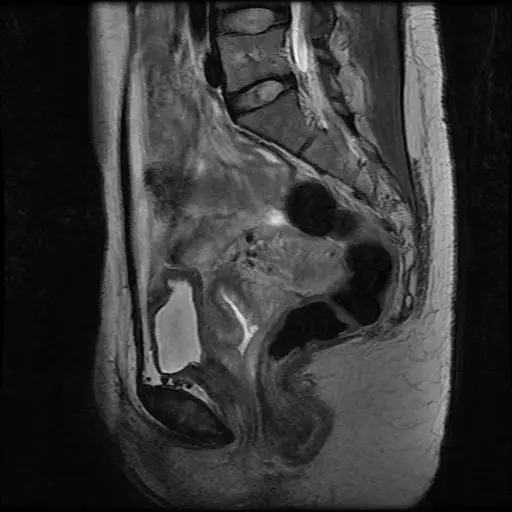골반 MRI 해석 방법: 3가지 필수 기술
골반 MRI를 이해하는 것은 골반 지역의 상태를 정확하게 진단하고 치료하는 데 중요합니다. 이 가이드는 X선 대비 MRI의 장점을 소개하고 이러한 상세 이미지를 해석하기 위한 세 가지 주요 기술을 설명합니다.
골반 MRI 이해하기
골반 MRI는 골반 영역의 포괄적인 이미징을 제공하며, 뼈, 연부 조직 및 장기를 세밀하게 볼 수 있습니다. 이 섹션에서는 골반 MRI가 보여주는 것과 다양한 상태를 진단하는 데 의한 장점을 설명합니다.

골반 MRI는 무엇을 보여줍니까?
- 연부 조직 세부사항: 근육, 인대 및 장기의 우수한 이미징.
- 장기 시각화: 다양한 상태 진단에 유용한 골반 장기의 명확한 보기.
- 골수 변화: X선으로는 볼 수 없는 골수 내 변화를 탐지합니다.
- 질병 탐지: 감염, 종양 및 기타 이상을 식별하는 데 더 효과적입니다.
언제 MRI를 받게 되나요?
- 지속적인 골반 통증: X선으로 충분히 설명되지 않는 경우 특히 해당됩니다.
- 부인과 증상: 비정상적인 출혈이나 덩어리와 같은 증상.
- 수술 계획: 수술 계획을 위한 상세한 해부학 정보를 제공합니다.
- 질병 진행 모니터링: 만성 상태에서 시간에 따른 변화를 평가하는 데 이상적입니다.
골반 MRI 해석 기술
골반 MRI 해석은 고급 이미징 기술에 대한 더 깊은 이해를 필요로 합니다. 다양한 전문 지식 수준에 있는 전문가들을 위한 세 가지 기술을 소개합니다.
1. X-ray Interpreter 활용하기
X-ray Interpreter는 이제 MRI 이미지에 대한 AI 기반 분석을 확장했습니다. 이 과정은 정확성을 보장합니다:
- 등록: X-ray Interpreter에 등록하여 MRI에 대한 AI 분석에 접근하세요.
- MRI 업로드: 당신의 골반 MRI 이미지를 업로드하세요.
- 해석 검토: AI 생성 해석을 받고 보고서를 다운로드하세요.
- 전문가 상담: 포괄적인 이해를 위해 항상 의료 전문가와 상담하는 것이 좋습니다.
자세한 내용은 시작 가이드를 확인하세요.
2. ChatGPT Plus 사용하기
ChatGPT Plus는 최신 GPT-4V 모델로 MRI 이미지 분석을 지원하여 상세하고 인터랙티브한 통찰력을 제공합니다:
- 구독: 고급 이미지 분석 기능을 위해 ChatGPT Plus에 구독하세요.
- MRI 업로드: OpenAI의 GPT-4V와 인터페이스하여 MRI 이미지를 업로드하세요.
- 분석 요청: 모델과 상호작용하여 철저한 분석을 요청하세요.
- 검토 및 확인: 필요에 따라 분석을 평가하고 수정하세요.
- 전문가 검증: 의료 전문가의 검증이 추천됩니다.
ChatGPT Plus를 사용하여 MRI를 해석하는 방법에 대한 우리의 포스트를 더 읽어보세요.
또한, 여러 비전 기능을 갖춘 다른 AI 모델이 등장함에 따라, xAI의 Grok, Anthropic의 Claude, Google Deepmind의 Gemini와 같은 다른 모델을 시도할 수도 있습니다.
3. MRI 해석 능력 기르기
MRI 읽기 능력을 향상시키고자 하는 의료 전문가에게 자기 학습은 매우 중요합니다:
- 교육: MRI 해석에 대한 고급 교육을 받으세요.
- 연습: 전문가의 지도를 받으며 정기적으로 연습하세요.
- 자원: 고급 이미징 도서 및 온라인 과정을 활용하세요.
- 피드백: 기술을 다듬기 위해 피드백을 받으세요.
- 지속적인 학습: 최신 이미징 기술을 유지하기 위해 지속적인 교육에 참여하세요.
자기 학습을 위한 권장 자료:
-
MRI에서 정상 및 변이 골반 해부학 - Radiology Key: 이 자료는 MRI에서 볼 수 있는 정상 및 변이 골반 해부학에 대한 포괄적인 개요를 제공하여 정확한 해석과 진단에 중요합니다.
-
골반 MRI에 대해 알아야 할 사항 - WebMD: WebMD는 골반 MRI의 과정과 목적에 대한 필수 통찰력을 제공하여 환자와 전문가가 기대할 수 있는 바를 이해하는 데 도움을 줍니다.
-
골반 MRI 스캔 - Healthline: Healthline은 골반 MRI 스캔의 절차와 용도, 준비 방법 및 이미징에서 기대할 수 있는 결과에 대해 상세히 설명합니다.
비교 분석
골반 MRI 해석을 위한 적절한 기술을 선택하는 것은 정확한 진단을 위해 매우 중요합니다. 이 섹션에서는 세 가지 방법을 비교합니다:
| 기준 | X-ray Interpreter | ChatGPT Plus | 자기 읽기 |
|---|---|---|---|
| 정확도 | 높음 (AI 기반)1 | 높음 (AI 기반)1 | 다양함 (기술 의존적) |
| 사용 용이성 | 쉬움 | 보통 | 도전적 |
| 비용 | 이미지당 $2.50부터 시작 | 월 $20 | 무료 (교육 비용 제외) |
| 시간 효율성 | 빠름 | 보통에서 빠름 | 느림에서 보통 |
| 학습 곡선 | 낮음 | 낮음에서 보통 | 높음 |
| 추가 자원 | 제공됨 | 부분적으로 제공됨 (OpenAI를 통해) | 스스로 조달 |
각 방법은 강점과 약점이 있으며, AI 옵션은 빠르고 정확한 해석을 제공하고, 자기 읽기는 의료 전문가의 심도 있는 학습을 촉진합니다.
결론
골반 MRI 해석은 골반 지역의 복잡한 상태를 진단하는 데 중요합니다. 이 가가는 다양한 전문 요구와 기술 수준에 맞춘 세 가지 기술을 제시합니다. AI 방법은 빠르고 정확한 해석을 제공하고, 자기 학습은 심층 지식을 추구하는 사람들을 위해 설계되었습니다.
기술을 선택할 때는 자신의 전문 지식 수준, 적시 해석의 필요성 및 사용 가능한 자원을 고려하세요. 윤리적 및 법적 기준은 환자의 안전과 기밀성을 보장하기 위해 항상 유지되어야 합니다.
관련 기사
자원 및 추가 학습
골반 MRI 해석에 대한 추가 탐색과 이해를 위해 다음 자원을 고려하세요:
-
자기공명영상(MRI) - MedlinePlus: MRI의 유형과 수행 방식에 대한 포괄적인 개요. 골반 MRI의 세부 사항과 테스트 준비에 유용합니다.
-
복부 및 골반 MRI - RadiologyInfo.org: 복부 및 골반 MRI 스캔에 대한 상세 정보, 의학적 진단에서의 용도 및 환자가 절차 동안 무엇을 기대할 수 있는지를 설명합니다.
-
골반 MRI - Queensland X-Ray: 골반 MRI의 특정 적용에 대한 통찰력을 제공하며, 절차의 징후와 환자가 기대할 수 있는 사항을 안내합니다.
이 자원들은 환자와 의료 제공자 모두에게 귀중한 정보를 제공하여 골반 MRI 스캔과 그 진단 및 관리에서의 역할에 대한 이해를 증진시킵니다.